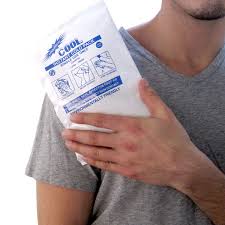Shoulder pain can affect much more than just our comfort. It can limit our ability to pick up our children, carry groceries, or even reach for something on a high shelf. If you’ve been struggling with nagging shoulder pain, there’s a strong possibility it may be due...
A stress fracture is a small crack within a bone. However, unlike acute fractures, which occur from a sudden injury, stress fractures gradually develop over time and are common among athletes, runners, and individuals with physically demanding lifestyles. These tiny,...
Tendons are tough, fibrous tissues that connect muscle to bone and play a critical role in our movement, from helping us swing a tennis racket to allowing us to lift groceries or climb the stairs. But for all their strength and flexibility, tendons are also...
How long is the Recovery Period After Shoulder Surgery

In the majority of cases, most shoulder injuries should not require surgical intervention. However, a major tear in the rotator cuff – the tendon and ligaments that are attached to and enfold the head of the arm bone or humerus – does usually require surgery. While the procedure can be performed with minimal invasion using an arthroscope, there is usually an extensive recovery period which can last for up to six months. The reason for this is that it takes some time for the tendon to heal and to re-attach properly to the bone. The recovery period will, of course, vary from patient to patient and depend on the severity of the tear.
The rehabilitation period involves a number of stages:
Post-Operative Period up to 6 weeks
Immediately after the operation, you will be encouraged to keep the shoulder as still as possible. Pain will vary from person to person and depend on the extent of the repair to the shoulder. The frequent application of cold packs to the area will help to reduce the swelling and the pain.
The first phase of recovery can potentially last up to 6 weeks after the surgery. You will be instructed to keep the shoulder as immobile as possible and to keep your arm in a sling. The use of the sling keeps the weight of your arm off of the tendon which assists in the healing process.
After some time, and according to your individual needs, your surgeon will advise you to attend physical therapy sessions. During these sessions the therapist will perform exercises that involve passive movement of the joint. Passive movement involves no contraction of the muscles. It is particularly important that the bicep muscle not contract during this period. The therapist will move the arm gently for you, without putting undue strain on the joint. They will also instruct you on how to move, while avoiding the contraction of muscles around the joint. This gentle movement is encouraged in order to prevent the formation of scar tissue that would form if there were no movement in the joint. Formation of scar tissue will limit movement in the joint.
6 to 12 Weeks
During the following 6 to 12 week period, you will be allowed to perform a limited range of arm movements. You will not be able to lift or push heavy objects as, even after this amount of time, placing this sort of strain on the joint may cause the sutures anchoring the tendon to the bone to pull out. You should avoid supporting your body weight using the affected arm.
3 to 6 months
This is the period during which you will begin to strengthen the muscles in the arm after the relatively long period of inactivity. This is essential to your full recovery. However, caution must still be taken to not to place too much strain on the joint, as the attachment of the tendon to bone will still be in the process of healing. There are a number of light but effective exercises that will be provided by your therapist to slowly strengthen the weakened muscles.
As stated previously, duration of post-operative recovery will differ from person to person and differ depending on the extent of the repair required. In all cases the instructions given to you by the orthopaedic surgeon must be followed very strictly in order to minimize the risk of complications and regain the full range of movement in your shoulder. For more information on shoulder surgery contact Premier Orthopaedics, or download our free eBook, The Pre-Operative Guide to Shoulder Surgery.


